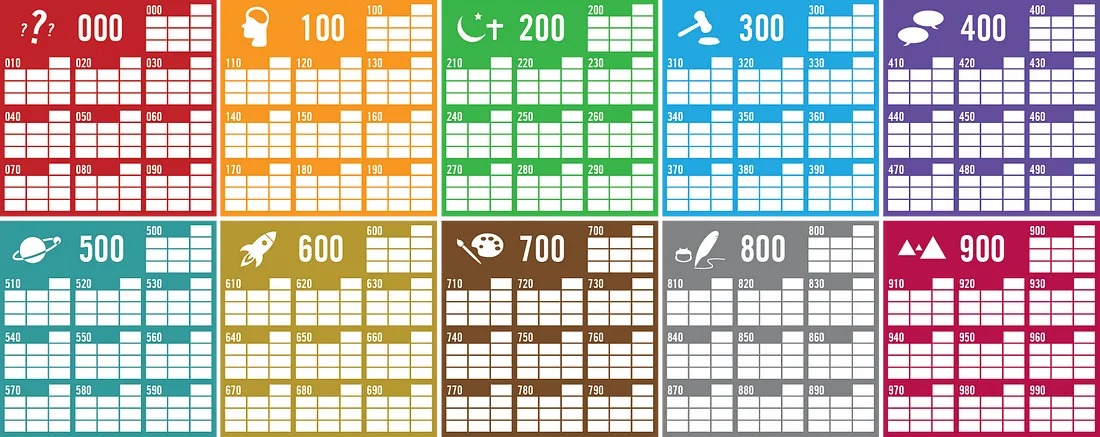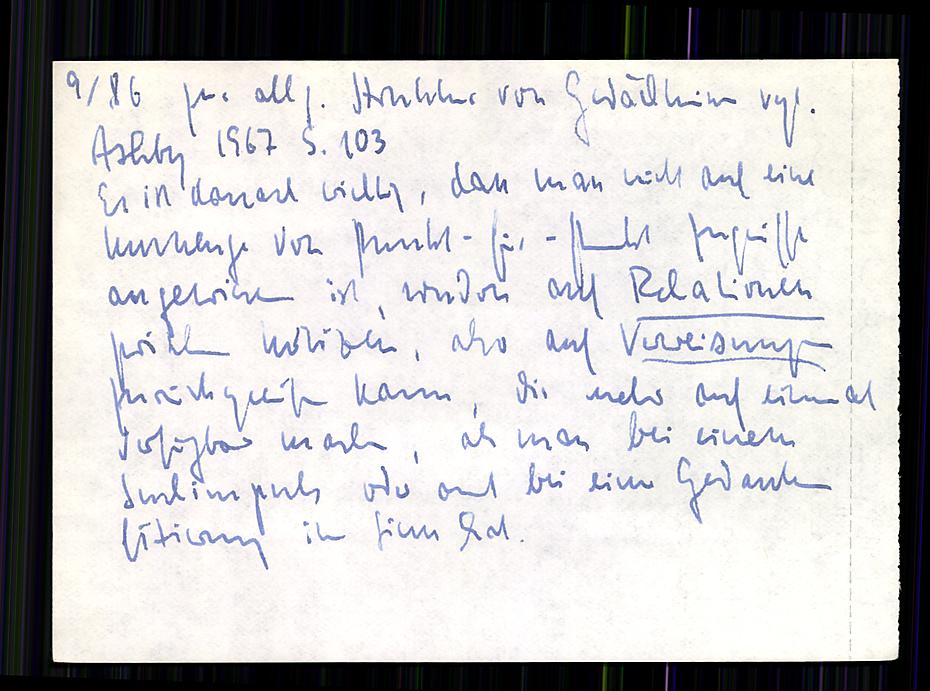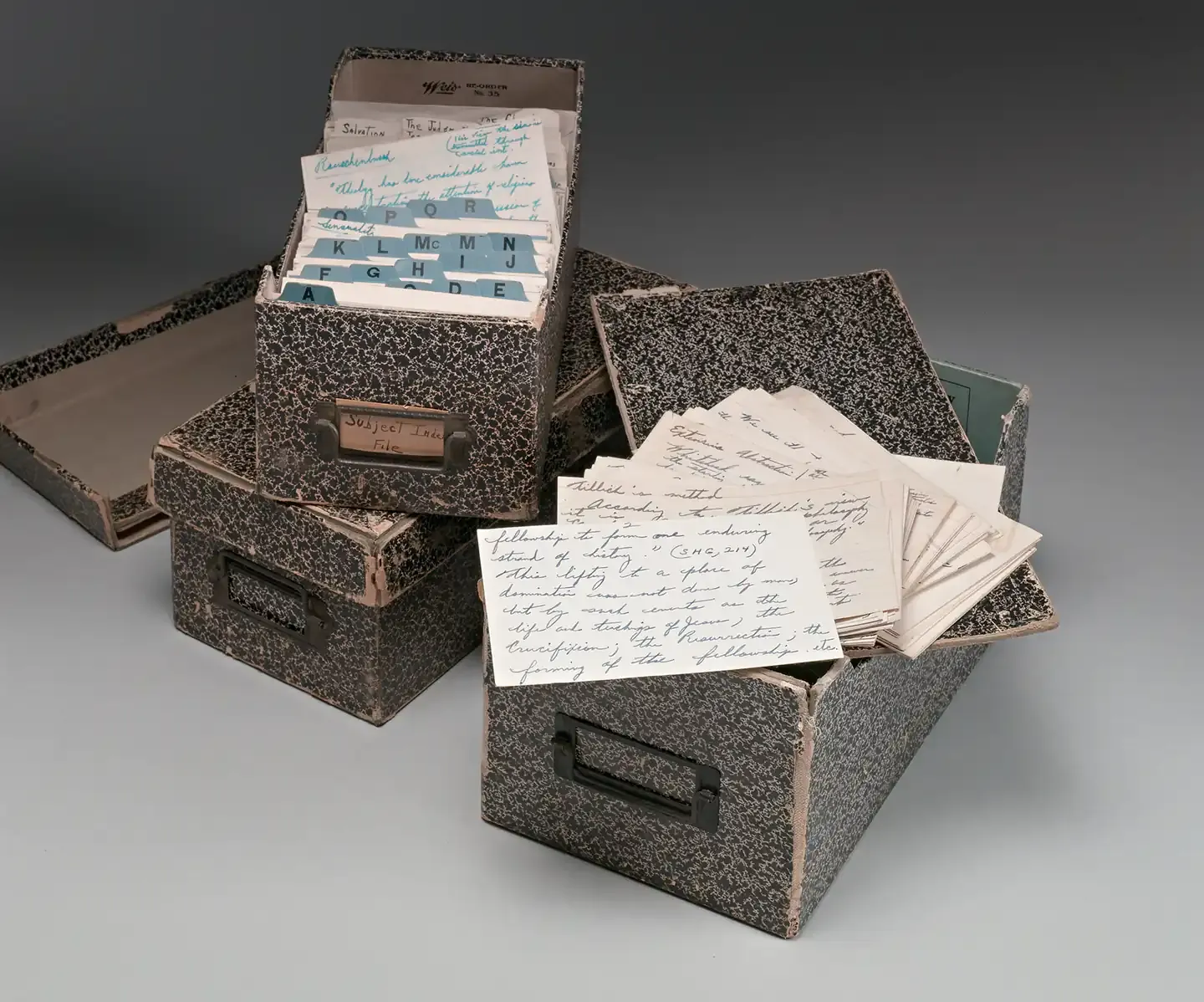I've sketched it out elsewhere but let's memorialize the broad strokes here because we're inspired at the moment... come back later and add in quotes from Luhmann and other sources (@Heyde1931).
Luhmann was balancing the differences between topically arranged commonplaces and the topical nature of the Dewey Decimal System (a standardized version across thousands of collections) and building neighborhoods of related ideas.
One of the issues with commonplace books, is planning them out in advance. How might you split up a notebook for long term use to create easy categories when you don't know how much room to give each in advance? (If you don't believe me, stop by r/commonplacebooks where you're likely to see this question pop up several times this year.) This issue is remedied when John Locke suggests keeping commonplaces in chronological order of their appearance and cross-indexing them.
This creates a new problem of a lot of indexing and increased searching over time as the commonplace book scales. Translating to index cards complicates things because they're unattached and can potentially move about, so they don't have the anchor effectuated by their being bound up in a notebook. But being on slips allows them to be more easily shuffled, rearranged, and even put into outlines, which are all fantastic affordances when looking for creativity or scaffolding things out into an article or book for creation.
As a result, numbering slips creates a solid anchor by which the cards can be placed and always returned for later finding and use. But how should we number them? Should it be with integers and done chronologically? (1, 2, 3, ..., n) This is nice, but makes a mish-mash of things and doesn't assist much in indexing or finding.
Why not go back to Dewey, which has been so popular? But not Dewey in the broadest sense of using numbers to tie ideas to concrete categories. An individual's notes are idiosyncratic and it would be increasingly rare for people to have the same note, much less need a standardized number for it (and if they were standardized, who does that work and how is it distributed so everyone could use it?) No, instead, let's just borrow the decimal structure of Dewey's system. One of the benefits of his decimal structure is that an infinity of new books can be placed on ever-expanding bookshelves without needing to restructure the numbering system. Just keep adding decimal places onto the end when necessary. This allows for immense density when necessary. But, importantly, it also provides some fantastic level of serendipity.
Let's say you go to learn about geometry, so you look up the topic in your trusty library card catalog. Do you really need to look at the hundreds of records returned? Probably not. You only need the the Dewey Decimal Number 516. Once you're at the shelves, you can browse through that section to see what's there and interesting in the space. You might also find things on the shelves above or below 516 and find the delights of topology and number theory or abstract algebra and real analysis. Subjects you might not necessarily have had in mind will suddenly present themselves for your consideration. Even if your initial interest may have been in Zhongmin Shen's Lectures on Finsler geometry (516.375), you might also profitably walk away with James E. Humphreys' Introduction to Lie Algebras and Representation Theory (512.55).
So what happens if we use these decimal numbers for our notes? First we will have the ability to file things between and amongst each other to infinity. By filing things closest to things which seem related to each other, we'll create neighborhoods of ideas which can easily grow over time. Related ideas will stay together while seemingly related ideas on first blush may slowly grow away from each other over time as even more closely related ideas move into the neighborhood between them. With time and careful work, you'll have not only a breadth of ideas, but a massive depth of them too.
The use of decimal numbering provides us with a few additional affordances:
1 (Neighborhoods of ideas)
1.1 combinatorial creativity
Neighborhoods of ideas can help to fuel combinatorial creativity and forge new connections as well as insight over time.
1.2 writing
One might take advantage of these growing neighborhoods to create new things. Perhaps you've been working for a while and you see you have a large number of cards in a particular area. You can, to some extent, put your hand into your box and grab a tranche of notes. By force of filing, these notes are going to be reasonably related, which means you should be able to use them to write a blog post, an article, a magazine piece, a chapter, or even an entire book (which may require a few fistfuls, as necessary.)
2 (Sparse indexing) We don't need to index each and every single topic or concept into our index. Because we've filed things nearby, if a new card about Finsler geometry relates to another and we've already indexed the first under that topic, then we don't need to index the second, because our future selves can easily rely on the fact that if we're interested in Finsler geometry in the future, we can look that up in the index, and go to that number where we're likely to see other cards related to the topic as well as additional serendipitous ideas related to them in that same neighborhood.
You may have heard that as Luhmann progressed on his decades long project, broadly on society and within the area of sociology, he managed to amass 90,000 index cards. How many do you suppose he indexed under the topic of sociology? Certainly he had 10s of thousands relating to his favorite subject, no? Of course he did, but what would happen over time as a collection grows? Having 20,000 indexed entries about sociology doesn't scale well for your search needs. Even 10 indexed entries may be a bit overwhelming as once you find a top level card, hundreds to thousands around it are going to be related. 10 x 100 = 1,000 cards to flip through. So if you're indexing, be conservative. In the roughly 45 years of creating 90,000 slips, Luhmann only indexed two cards with the topic of "sociology". If you look through his index, you'll find that most of his topical entries only have pointers to one or two cards, which provide an entryway into those topics which are backed up with dozens to hundreds of cards on related topics. In rarer, instances you might find three or four, but it's incredibly rare to find more than that.
Over time, one will find that, for the topics one is most interested in, the number of ideas and cards will grown without bound. Here it makes sense to use more and more specific topics (tags, categories, taxonomies) all of which are each also sparsely indexed. Ultimately one finds that in the limit, the categories get so fractionalized that the closest category one idea has with another is the fact that they're juxtaposed closely by number. The of the decimal expansion might say something about the depth or breadth of the relationship between ideas.
Something else arises here. At first one may have the tendency to associate their numbers with topical categories. This is only natural as it's a function at which humans all excel. But are those numbers really categories after a few weeks? Probably not. Treat them only as address numbers or GPS coordinates to be able to find your way. Your sociology section may quickly find itself with invasive species of ideas from anthropology and archaeology as well as history. If you treat all your ideas only at the topical level, they'll be miles away from where you need them to be as the smallest level atomic ideas collide with each other to generate new ideas for you. Naturally you can place them further away if you wish and attempt to bridge the distance with links to numbers in other locations, but I suspect you'll find this becomes pretty tedious over time and antithetical when it comes time to pull out a handful and write something. It's fantastically easier to pull out a several dozen and begin than it is to go through and need to pull out linked cards in a onesy-twosies manner or double check with your index to make sure you've gotten the most interesting bits. This becomes even more important as your collection scales.











